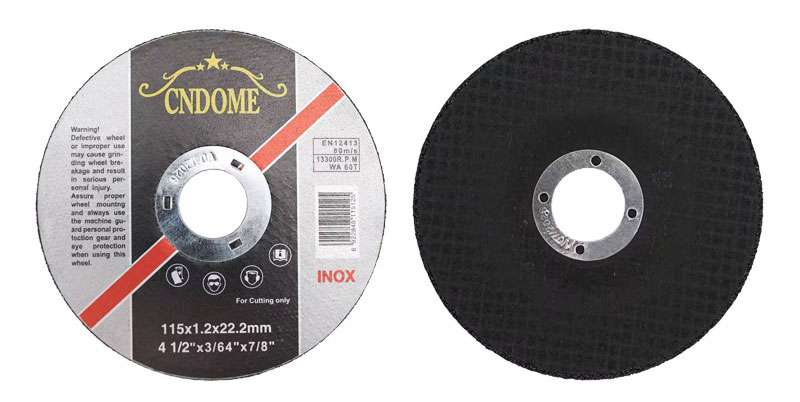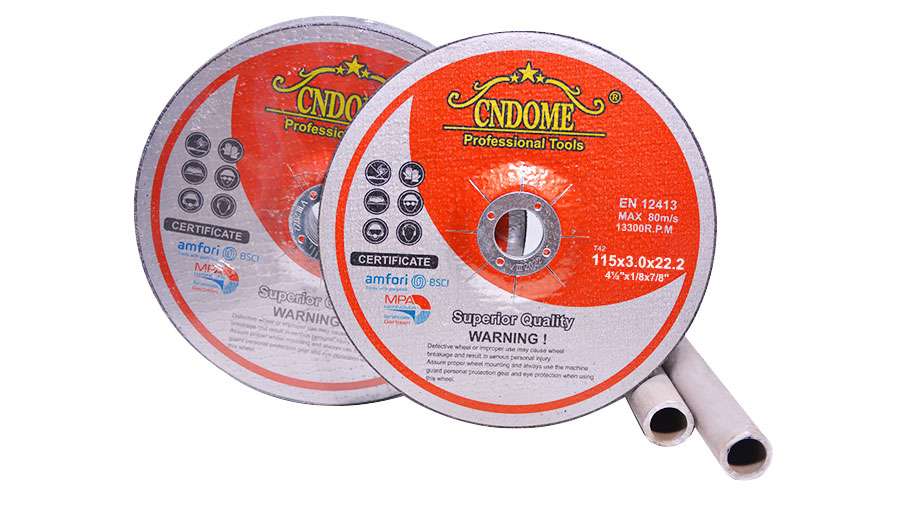When it comes to selecting the right cutting disc for your angle grinder, one of the most important factors to consider is the thickness of the disc. For a 115mm (4.5-inch) cutting disc, the thickness can significantly influence the performance and application of the tool. In this guide, we’ll explore the various thicknesses available for 115mm cutting discs, their applications, and how to choose the right one for your needs.
Understanding Cutting Disc Thickness
The thickness of a cutting disc is measured in millimeters and typically ranges from 0.8mm to 3mm for 115mm discs. Here’s a breakdown of the common thicknesses and their best uses:
1. 0.8mm to 1mm (Thin Discs)
- Best for: Precision cutting, minimal material loss, and faster cuts.
- Applications: These thin discs are ideal for cutting thin metal sheets, tubes, and profiles. They are preferred when you need a clean, accurate cut with minimal burrs. The reduced thickness results in less heat generation and material wastage.
- Advantages: Faster cutting speed, cleaner cuts, and less material loss.
- Disadvantages: Higher risk of disc breakage if not used properly, less suitable for thicker materials.
2. 1.2mm to 1.6mm (Medium Discs)
- Best for: General-purpose cutting with a balance of speed and durability.
- Applications: These discs are versatile and can handle a variety of materials including metal, stainless steel, and aluminum. They offer a good balance between cutting speed and disc longevity.
- Advantages: Good balance of speed and durability, suitable for a range of materials.
- Disadvantages: Slightly more material loss compared to thin discs, moderate risk of breakage.
3. 2mm to 3mm (Thick Discs)
- Best for: Heavy-duty cutting where disc longevity is crucial.
- Applications: These thicker discs are designed for cutting through thicker, tougher materials like cast iron, rebar, and thick-walled pipes. They are more durable and can withstand higher stress and heat during cutting.
- Advantages: Higher durability, better suited for thick materials, reduced risk of breakage.
- Disadvantages: Slower cutting speed, more material loss, and higher heat generation.
Choosing the Right Thickness for Your Project
Selecting the appropriate thickness for your cutting disc depends on several factors, including the material you’re cutting, the precision required, and the power of your angle grinder.
- Material Type: For thin metal sheets and profiles, opt for thinner discs (0.8mm to 1mm) to achieve clean cuts with minimal burrs. For thicker materials, choose medium (1.2mm to 1.6mm) or thick discs (2mm to 3mm) to ensure the disc can handle the material’s density without excessive wear.
- Cutting Speed vs. Durability: Thinner discs cut faster but wear out quicker and are more prone to breaking. Thicker discs are slower but more durable and less likely to break. If speed is crucial and the material is not too thick, a thinner disc is preferable. For prolonged cutting tasks on tough materials, a thicker disc will last longer and be safer.
- Angle Grinder Power: Ensure your angle grinder can handle the disc thickness you choose. Thicker discs require more power to cut effectively, so check your grinder’s specifications to match the disc accordingly.
Safety Tips for Using Cutting Discs
Regardless of the disc thickness, safety is paramount when using cutting discs. Here are some essential safety tips:
- Wear Protective Gear: Always wear safety goggles, gloves, and hearing protection. Long sleeves and a face shield are also recommended to protect against sparks and debris.
- Inspect the Disc: Before use, check the disc for any signs of damage or wear. Do not use cracked or damaged discs as they can break during operation.
- Correct Mounting: Ensure the disc is properly mounted and secured on the angle grinder. Follow the manufacturer’s instructions for installation.
- Proper Handling: Avoid applying excessive pressure on the disc. Let the tool do the work and maintain a steady, controlled motion.
- Storage: Store discs in a cool, dry place away from direct sunlight and moisture. Improper storage can lead to disc damage and reduced performance.
Conclusion
Choosing the right thicknesses of your 115mm cutting discs is crucial for achieving optimal performance and safety in your cutting tasks. By understanding the applications and benefits of different thicknesses, you can select the best disc for your project, ensuring clean, efficient, and safe cuts. Whether you’re working with thin metal sheets or heavy-duty materials, there’s a perfect disc thickness to meet your needs. Always prioritize safety and proper handling to get the best results from your cutting discs.



